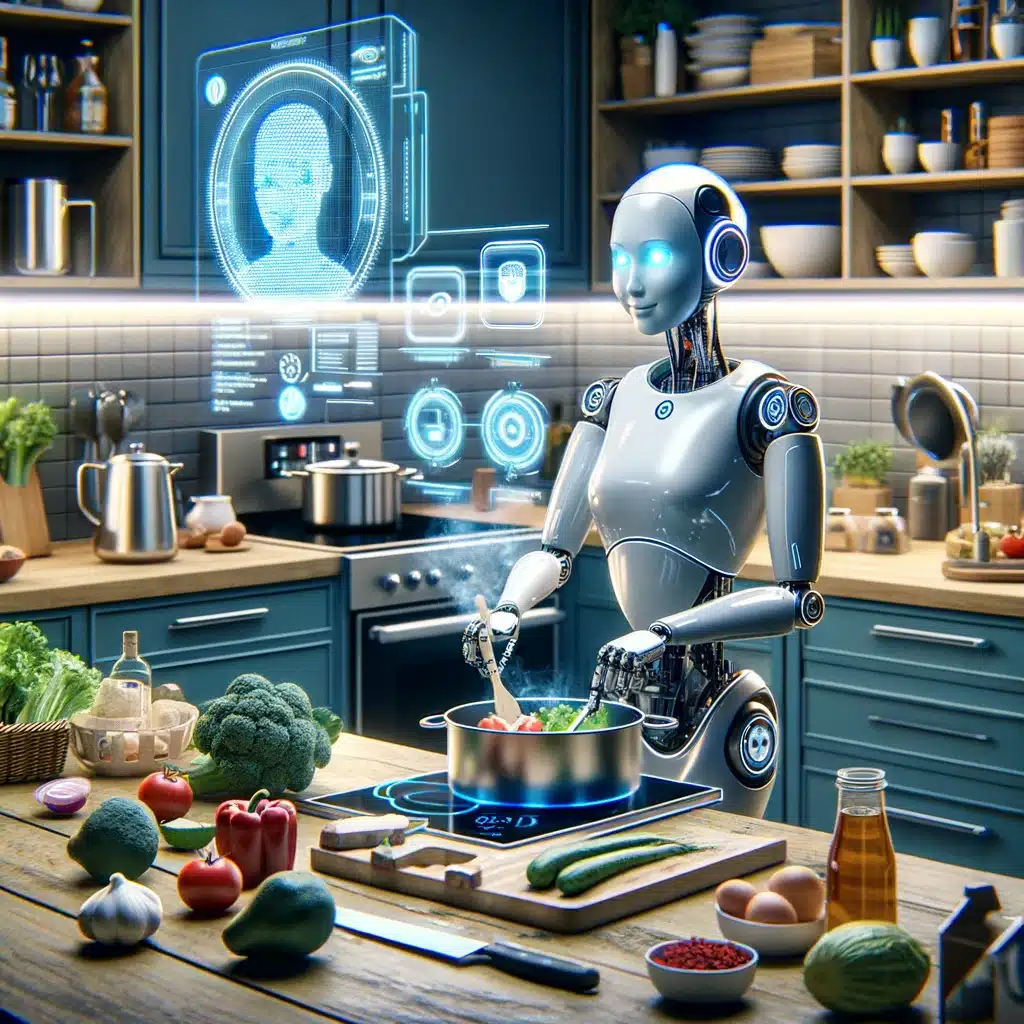
Approx. read time: 2.7 min.
Post: Envisioning AI-Powered Robots in the Kitchen: Challenges and Ethical Considerations
Envisioning AI-Powered Robots in the Kitchen: Challenges and Ethical Considerations. Integrating ChatGPT Minds into Robotic Forms: What Are the Risks?
The initiative to equip robots with AI intellects is uncovering significant practical obstacles as well as substantial ethical dilemmas. Across the globe, from Shanghai to New York, robots have been deployed in kitchens, preparing meals. They efficiently assemble burgers, dosas, pizzas, and stir-fries, replicating the consistent, precise actions robots have performed in manufacturing for decades.
However, Ishika Singh envisions a different kind of robot — one that can independently navigate a kitchen, search through the refrigerator and cupboards, select ingredients, and prepare a delicious meal, much like a task effortlessly completed by a child, yet unachievable by current robots. This level of autonomy in robots is hindered by the vast knowledge required about a specific kitchen, and the innate human qualities of adaptability, common sense, and ingenuity are challenging to encode into robotic programming.
Singh, who is pursuing a Ph.D. in computer science at the University of Southern California, points out the limitations of traditional robotic programming methods, which involve meticulously defining each action, its prerequisites, and anticipated outcomes. Despite extensive coding efforts, these robots fail to adapt to unforeseen circumstances.
In the quest to develop a robot capable of managing dinner preparations, it must understand the cultural preferences of the food it prepares, navigate the unique layout of the kitchen, and cater to the specific dietary needs and appetites of the individuals it serves on any given day. This requires a robot to not only be knowledgeable but also adaptable enough to manage unexpected situations and make adjustments as needed.
Jesse Thomason, a computer science professor at U.S.C. overseeing Singh’s doctoral research, acknowledges that achieving such a level of autonomous functionality in robots has been an ambitious objective. Automating human tasks through robotics could revolutionize industries and simplify everyday life.
Despite the proliferation of videos showcasing robotic capabilities in various applications, from logistics to healthcare, these machines lack the adaptability and resilience inherent to humans. As Naganand Murty, CEO of Electric Sheep, explains, traditional robotics struggles with the dynamic nature of the real world, which constantly presents new challenges and changes.
The dream of integrating a sophisticated, pragmatic intellect into robotic frames has been long-standing. Until the advent of ChatGPT and the GPT-3 large language model in 2022, technology had not offered a viable solution. These advanced computational models can generate text that simulates human conversation and writing, providing robots with a vast database of knowledge about culinary practices, kitchen environments, and recipes, thereby significantly enhancing their problem-solving capabilities in meal preparation.
Related Posts:
The Great Reset: Building a Sustainable Post-Pandemic Future
Midnight Musings with Cousin Johnny: Laughter, Spies, and Kitchen Conquests
Can Artificial Intelligence Keep Our Deceased Loved Ones Alive in Digital Form?
Autonomous Home Robots: Bridging AI Innovation and Practical Application with OK-Robot System
Robotics in Healthcare: The Future of Robots in Medicine
AI-Powered Banking: Amnon Shashua’s Digital Bank Revolutionizes Finance in Israel
Revolutionizing the Future: How Advanced Robotics and AI are Transforming Industries and Daily Life
Cereal Confusion: Unraveling the Truth Behind Misleading Breakfast Product Labels in Canada









